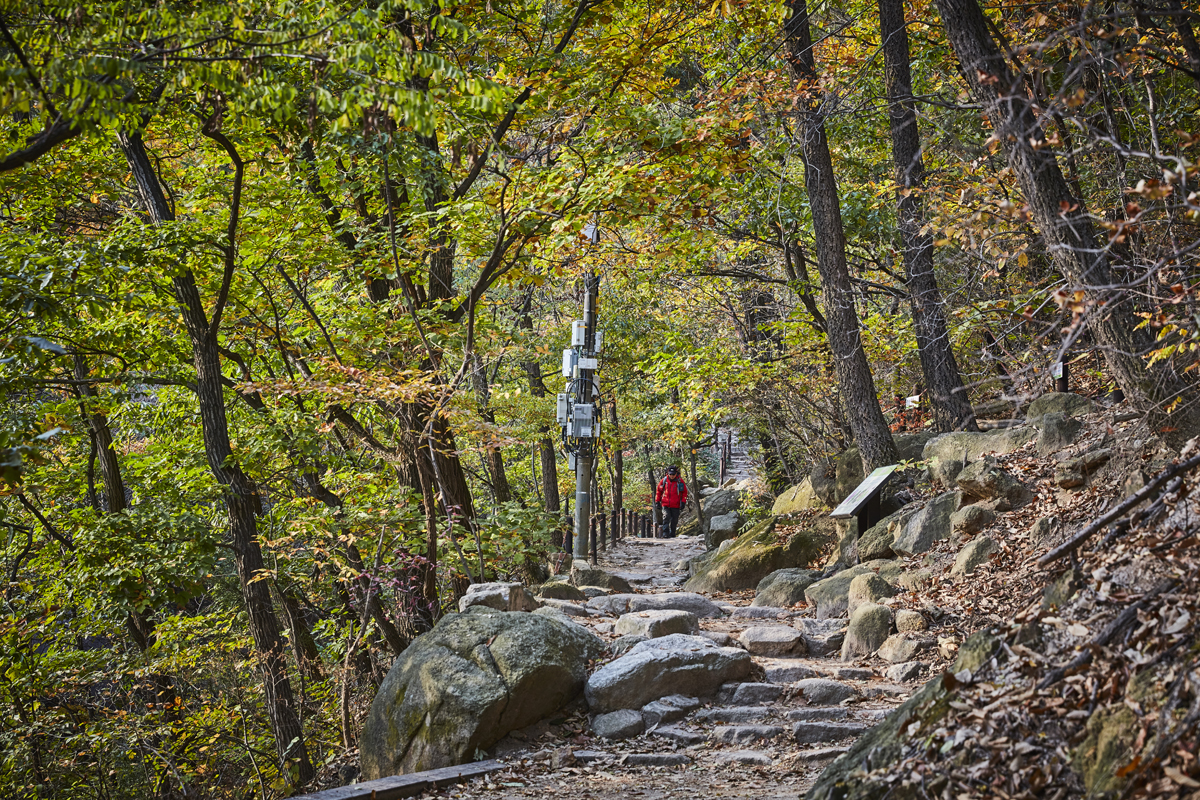Bukhansan National Park (Seoul District) (북한산국립공원(서울))
5.5Km 2024-11-27
262 Bogungmun-ro, Seongbuk-gu, Seoul
+82-2-909-0497
Bukhansan Mountain was officially designated as a national park in 1983. Bukhansan National Park covers both Bukhansan and Dobongsan Mountains, and spans a total area of 80.699 ㎢. At the top of Bukhansan Mountain are Baegundae Terrace (835.6 m), Insubong Peak (810.5 m) and Mangyeongdae Terrace (799.5 m), which gave the mountain the nickname "Samgaksan" or the "three-horned mountain." The mountain had other names: Sambongsan (mountain with three peaks), Hwasan (flower mountain), and Buaak (mountain shaped like a person giving a baby a piggyback ride). The current name, Bukhansan, was given after the Bukhansanseong Fortress was built under King Sukjong of the Joseon dynasty.
Uniqlo - Lotte Cheongnyangni Branch [Tax Refund Shop] (유니클로 롯데청량리)
5.5Km 2024-04-18
B1, 214, Wangsan-ro, Dongdaemun-gu, Seoul
-
Golden Dew - Lotte Cheongnyangni Branch [Tax Refund Shop] (골든듀 롯데청량리)
5.5Km 2024-04-19
1F, 214, Wangsan-ro, Dongdaemun-gu, Seoul
-
Lotte Department Store - Store Cheongnyangni Branch [Tax Refund Shop] (롯데백화점 청량리점)
5.5Km 2024-04-23
1F, 214, Wangsan-ro, Dongdaemun-gu, Seoul
-
![Jack Nicklaus [Tax Refund Shop] (잭니클라우스)](http://tong.visitkorea.or.kr/cms/resource/29/3313229_image2_1.jpg)
![Absorba [Tax Refund Shop] (압소바)](http://tong.visitkorea.or.kr/cms/resource/79/3313679_image2_1.jpg)
![Agabang Flex [Tax Refund Shop] (아가방플렉스)](http://tong.visitkorea.or.kr/cms/resource/60/3314560_image2_1.jpg)
![Motherpia [Tax Refund Shop] (마더피아)](http://tong.visitkorea.or.kr/cms/resource/89/3313889_image2_1.jpg)
![Volvik [Tax Refund Shop] (볼빅)](http://tong.visitkorea.or.kr/cms/resource/57/3314557_image2_1.jpg)
![Crocs [Tax Refund Shop] (크록스)](http://tong.visitkorea.or.kr/cms/resource/98/3313598_image2_1.jpg)

![Uniqlo - Lotte Cheongnyangni Branch [Tax Refund Shop] (유니클로 롯데청량리)](http://tong.visitkorea.or.kr/cms/resource/58/2888858_image2_1.jpg)
![Golden Dew - Lotte Cheongnyangni Branch [Tax Refund Shop] (골든듀 롯데청량리)](http://tong.visitkorea.or.kr/cms/resource/51/2889551_image2_1.jpg)
![Lotte Department Store - Store Cheongnyangni Branch [Tax Refund Shop] (롯데백화점 청량리점)](http://tong.visitkorea.or.kr/cms/resource/07/2889907_image2_1.jpg)
 English
English
 한국어
한국어 日本語
日本語 中文(简体)
中文(简体) Deutsch
Deutsch Français
Français Español
Español Русский
Русский